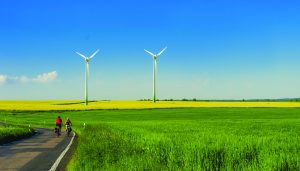When we dive into the access to energy world some startling statistics shine bright all over us: 1.1 billion people with no access to energy; 2.6 billion with no clean cooking facilities, and up to 30% of those families’ revenue spend on poor energy.
If we take a deeper dive, it is impossible not to get hooked by other not so shimmering information, but so powerful that can blind us for a while – and that has driven us to review our Access to Energy Program approach in Brazil. Now, it is designed – and it is delivered – through a gender lens.
We are all aware that different cultures and socio-economic contexts are the main drivers for the expectations that society has towards women and men’s roles and responsibilities in communities. Hence, the existence of a natural “gender division of labor”, that follows into 3 categories: productive, reproductive, and community work.
Productive work is related to paid jobs, or to any activities that generate income. The reproductive work focuses on the family well-being, and it is often not recognized as a real work. Last, community work is comprised of a series of social and political activities for the improvement of local communities.
Men and women have their share in the 3 categories, but the reproductive work is usually left for women and girls. And it is from the combination of these data that stems the under tapped, striking, and global intimate link between access to energy and women empowerment.
In 2014, Deloitte University Press launched a report entitled “Women, energy and economic empowerment – applying a gender lens to amplify the impact of energy access”, which relied on innovative survey ideas and deployment of energy access programs to conclude that “a gender lens approach to energy access programs can be beneficial all the way around – for women, for local community, and for emerging nations”.
With this in mind, we set foot in the hinterlands of the State of Bahia, in the city of Pintadas, and delivered our first Access to Energy project with a gender lens, which ended in early June. We came back home with more ideas than what has already been proved via other projects. We then registered and shared what we learned, and started articulating new, innovative partnerships. Along with Schneider Inside Sales team, we designed a new and specific business model with small re-sellers who want to be part of their communities’ sustainable development. And we revamped our KPIs to capture impacts on women, besides adapting our entrepreneurship content.
Late October we´ll set sail to Rio de Janeiro, at the “Baixada Fluminense”, and also to Alagoas, in Northeast Brazil. In 2017 it´ll be the time to expand the Program to the States of Amazonas, Paraiba, Pernambuco, and Maranhão.
Because Brazil is a continental country, delivering our Program in those States means understanding very diverse specifics in terms of people, partners, and impacts. This diversity of people and places help us being a rich, yet challenging, soil for innovation. What we want, and are committed with, is to become an important player in the private sector to answer, at least locally, the UNIDO’s and UN Women Report “Sustainable energy for all: the gender dimensions”, where it is stated that the global energy divide is also a gendered energy divide.



